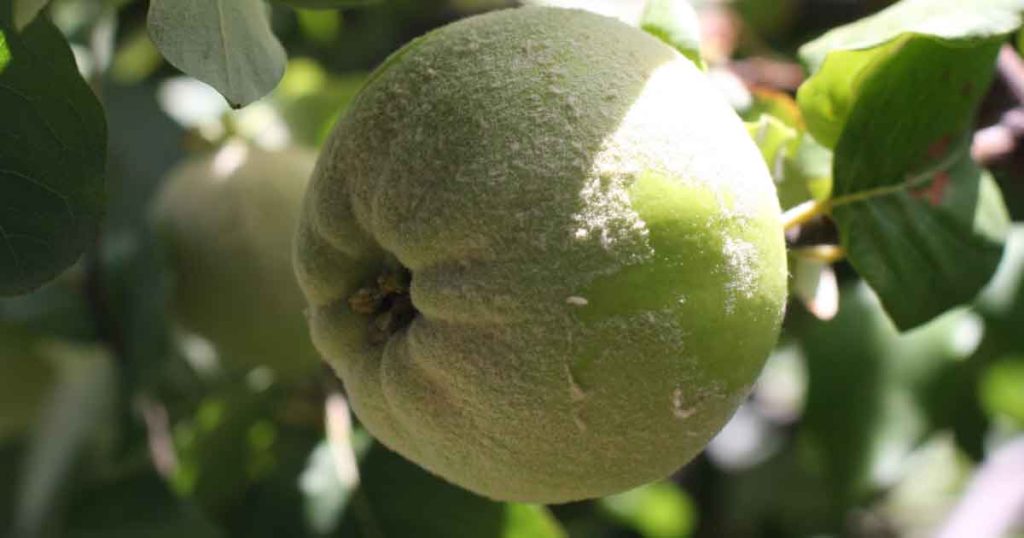(Cydonia oblonga)

Quince trees are not only a great fruit tree they can also make an excellent small tree for the home garden.
Quince trees produce useful fruit but with good foliage they also make great specimen trees. So for a versatile fruit tree, that grows well in colder climates, is ornamental and easy care, Quince Trees are worth considering.
A fully laden Quince tree with golden fruit at the end of summer into fall is magnificent.
Quince Varieties
These are small growing tree to around 12 – 15 feet high, for fruit you need to make sure you are looking for the right varieties.
- ‘Angers’ – A French variety, very vigorous, however it is not widely grown for fruit.
- Smyrma’ – A self pollinating variety that requires less chill hours that some others. Smyrna will produce a better crop with cross pollination.
- ‘Champion’ – Very reliable variety, self pollinating and good large fruit. Excellent for espalier.
- ‘Orange’ – Requiring the least chill hours of all, smallish fruit. Ripens earlier than others.
Looking at Fruit Trees in more detail
How to Grow Quince Trees.
Quinces are cold tolerant, and in fact need a chill period to set fruit, self pollinating they will produce more fruit if located near another quince tree.
They do prefer a good humus rich soil, however they will grow in poorer soils. A sunny position is essential for good fruiting. Generally suited to zones 5-10.
Quince trees are self pollinating so you do need more than one tree to get fruit.
Not all Quince trees produce edible fruit, the flowering or Japanese quince produces fruit however it is bitter. Look for named fruiting varieties.
Quinces are not usually eaten raw as uncooked the flesh can be tough and sour. In fact even deer are reluctant to eat raw Quince
Care Summary
- Position – Full Sun
- Soil – Well drained and humus rich. A slightly acidic soil is best.
- Water requirements – Once established Quince trees are regarded as drought tolerant, although a lack of water can cause fruit drop.
- Fertilizer – A slow release low nitrogen fertilizer applied in early spring should be adequate.
Pruning Quince Trees
Quince trees are slow to grow and produce rather random criss crossed growth. Little pruning is required although dead wood should be pruned back to a junction as needed. As the tree matures some of the intersecting branches can be pruned away to open the structure of the tree.
The time to prune is after the last frosts. Suckers can be removed at any time.
Fruit is produced on the current seasons growth, so mature trees can be pruned a little when dormant to stimulate new growth and improve fruiting.
Quince trees are available for sale from the following specialist nurseries.
STARK Bro’s NURSERIES& ORCHARDS Co.
PO Box 1800 Louisiana MO 63353 – phone: 1-800-325-4180
Originators of Red and Golden Delicious apples. Full line of fruit, Apricots, Berries, Cherries, Nectarines, Pears, Grapes, Nuts, shade and flowering trees, shrubs roses and small fruits.Includes: Walnuts, Carpathian English Walnut, Lake English Walnut, Black Walnut and others
www.starkbros.com

